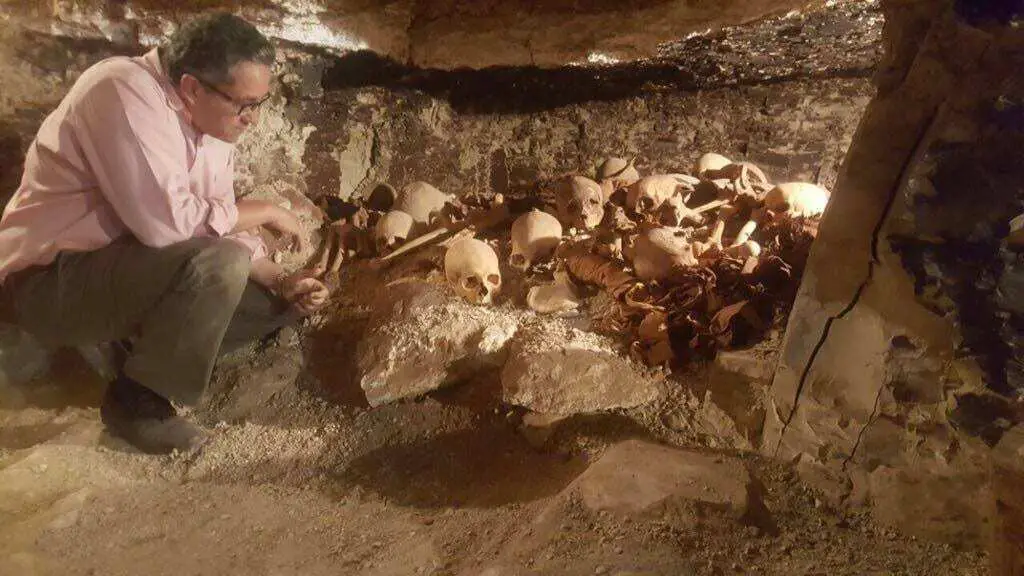Egyptian Minister of Antiquities, Dr. Khaled El-Enany has announced the discovery of a New Kingdom tomb that belonged to the God Amun’s goldsmith, Amenemhat (Kampp 390), along with a burial shafts containing further burials.
The finds, dating back to the New Kingdom (16th to 11th centuries BC), were made in the Draa Abul Naga necropolis on the west bank of the Nile in Luxor, famed for its temples and burial grounds.
Excavations on the tomb were carried out by an Egyptian archaeological team, led by Dr. Mostafa Waziri, Director General of Luxor.
Dr. Waziri said that “the newly discovered tomb includes an entrance located in the courtyard of another Middle Kingdom tomb (Kampp150).

The entrance leads to a squared chamber with a niche at its far end. Inside there’s a partly damaged “duo” sandstone statue that is depicting Amenemhat sitting on a high back chair beside his wife. Between their legs stands a smaller figure of one of their sons.”
Dr. Waziri pointed that the tomb has two burial shafts. The first shaft is located to the right of the chamber and holds a collection of mummies, sarcophagi and funerary masks carved in wood, along with a collection of statuettes of Amenemhat and his wife. The second shaft holds 21st and 22nd dynasty sarcophagi that have since, badly deteriorated.
In the courtyard, the archaeological team uncovered a group of burial shafts dating possibly to the Middle Kingdom that includes the burial of a woman and her two children with wooden coffins and a collection of head rests.
Archaeologist Mohamed Baabash said that during excavations, the mission discovered several funerary objects including; an offering table, 4 wooden sarcophagi, a sandstone statue of a trader in king Tuthmose III’s temple named “Mah,” a collection of 150 ushabti figurines carved in faience and 50 funerary cones, 40 of which are evidence of the presence of other tombs belonging to four officials.
Header Image Credit : Ministry of Antiquities وزارة الآثار







